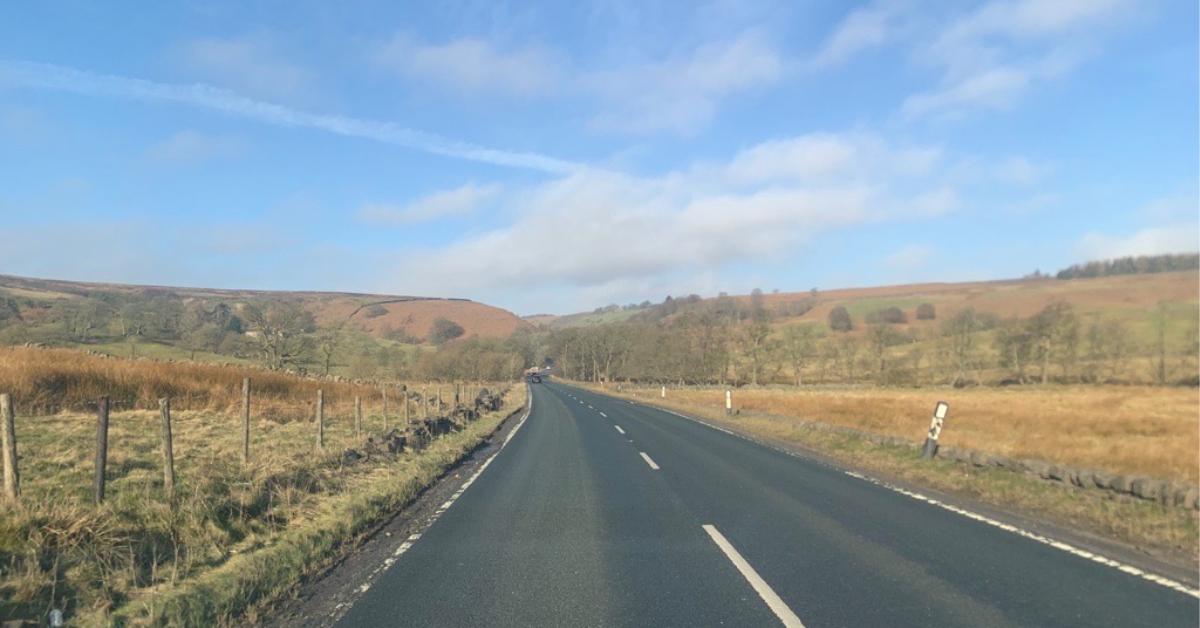Subscribe to trusted local news
In a time of both misinformation and too much information, quality journalism is more crucial than ever. By subscribing, you can help us get the story right.
- Subscription costs less than £1 a week with an annual plan.
Already a subscriber? Log in here.
30
Mar 2024
Local history spotlight: Blind Jack of Knaresborough

If you’re a Knaresborough resident, you’ll almost certainly have heard about Blind Jack, but his influence can be felt much further than the small Yorkshire town.
A civil engineer, local guide, horse trader, businessman and a musician, Jack can sometimes be overshadowed by Knaresborough’s other famous figure, Mother Shipton, but he lived an extraordinary – and long – life, especially for the time period.
The early years
Born in 1717 in a cottage connected to the churchyard opposite Knaresborough Castle, John - commonly also known as Jack - Metcalf nearly fell foul of the high infant mortality rate of the era when he was struck down with smallpox aged six.
He recovered but the illness left him permanently blind – earning him his moniker, which would be considered insensitive by many today.
By all accounts, Jack took his new life in his stride, and it's claimed within three years he could find his way to any part of Knaresborough, unassisted. This intrinsic knowledge of the town became an invaluable tool in one his many jobs as a local guide, showing visitors around the area.

John (Jack) Metcalf was born and raised in a cottage opposite Knaresborough Castle
One of his other talents was for music and at 15 years old he made a name for himself as a fiddler, playing in local pubs, one which was the Queen’s Head in Kettlesing, which still operates today.
Scandal and elopement
Touring as a musician could have been where he met Dorothy Benson, the daughter of the landlord at Granby Inn. However, their love story was far from straightforward – in his twenties, Jack found himself at the centre of a scandal involving another woman.
In his own biography, Jack claimed that the woman – the sister of one of his friends - would often ‘propose such whimsical schemes’ that ‘gave him reason to believe to laugh and be merry was the chief business of her life’.
Detailing his version of events in E&R Pick’s The Life of John Metcalf, Commonly Called Blind Jack of Knaresborough he said:
When the woman came to Jack to tell him of her pregnancy and ask him to marry her to avoid public shame, he instead told Dorothy, and conspired to neither marry the unnamed woman, nor pay her for her troubles.
He left Yorkshire for seven months to let the furore blow over, and when he returned, Dorothy was engaged to another man. However, Jack convinced her to elope with him, and they married in secret, going on to have four children before Dorothy died in 1778.
A storied career
The latter part of the 18th century was a busy period of Jack's life, and one where his business credentials came to the fore; in the 1740s he worked as a carrier for goods in the local area, expanding into a stagecoach business by 1754.
During the 1745 Jacobite Uprising he even worked as an assistant to the royal recruiting sergeant in the Knaresborough area, travelling to Scotland with the army.

Jack built some of the routes for roads that are still used today, such as the A59
Due to his successful stagecoach business, he had first-hand perspective into the state of the local roads - and wasn't particularly impressed. So when the opportunity to win a contract to build part of a road between Harrogate to Boroughbridge arose in 1765, he seized the chance.
He went on to build roads across Yorkshire, Lancashire, Derbyshire and Yorkshire, including between Knaresborough and Wetherby, and Wakefield to Huddersfield.
In 1792 he retired to live with his daughter and her husband in Spofforth – but that wasn’t the end of his adventures. Aged 77, he walked to York to meet with a publisher and discuss his extraordinary life.
He died aged 92 in Spofforth, where he is buried in All Saints churchyard.
A legacy that lives on
The blue plaque dedicated to Blind Jack can be found in Knaresborough, as well as a statue. There’s also a pub named after him in the town, and a section of road bearing his name too.
His legacy also lives on in the contribution he made to the infrastructure of the North's roads - many of the routes which survive to this day, such as parts of the A59 and A61.

Blind Jack's on Market Place, Knaresborough
Sources for the article include Historic UK, Knaresborough Civic Society, The University of Michigan website, EnglishHistory.net and The Life of John Metcalf, Commonly Called Blind Jack of Knaresborough at archive.org.
(Lead image Pixabay and Knaresborough Civic Society)
Read more:
- Exploring North Yorkshire’s plaques and the history behind them
- Crime author solves mystery of Ripon mural
- ‘Tai chi teaches you about yourself’ – the Valley Gardens class honouring martial arts principles
0